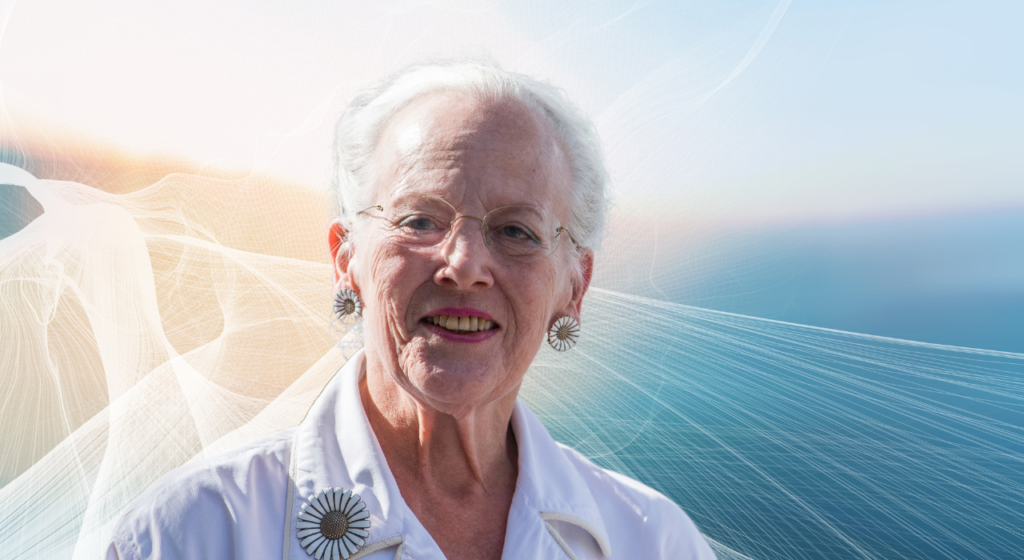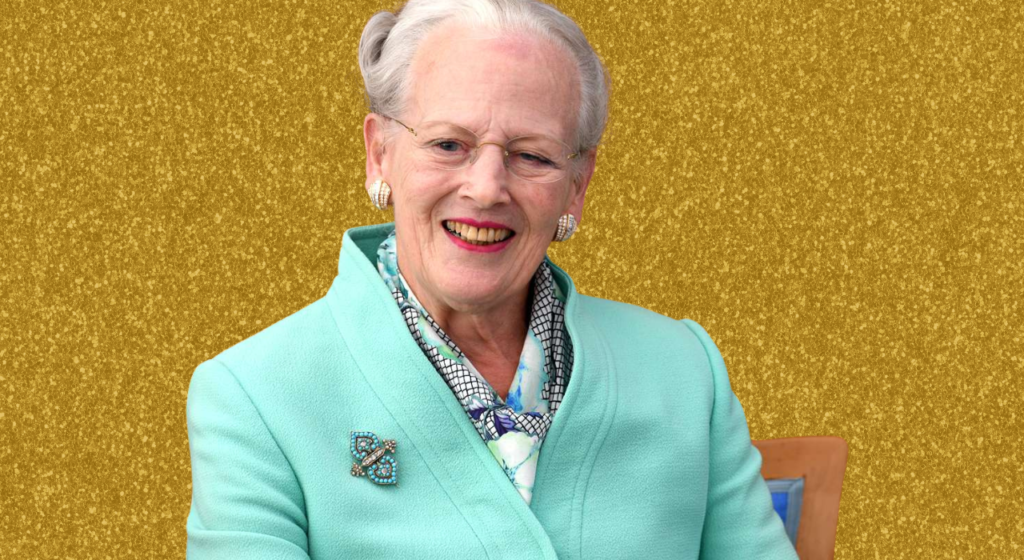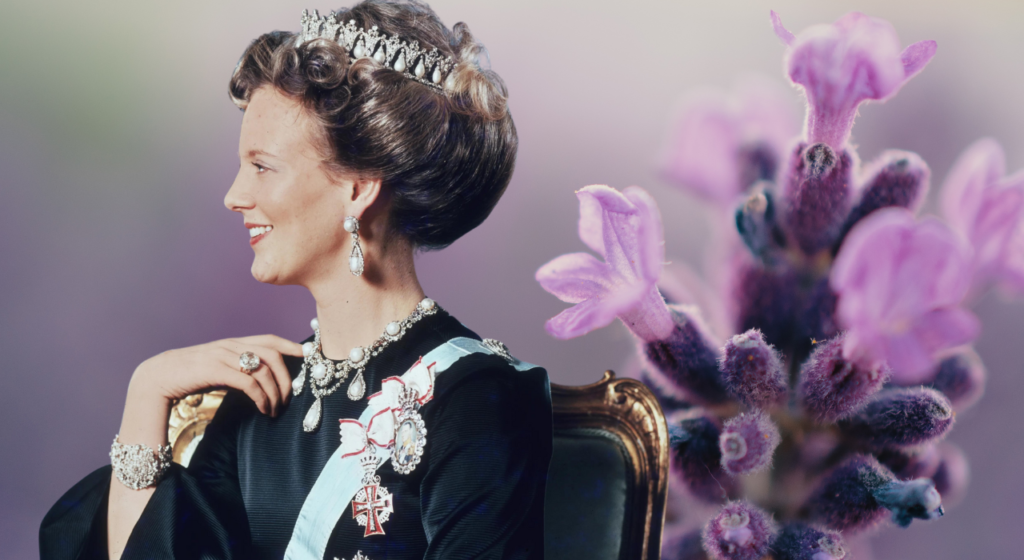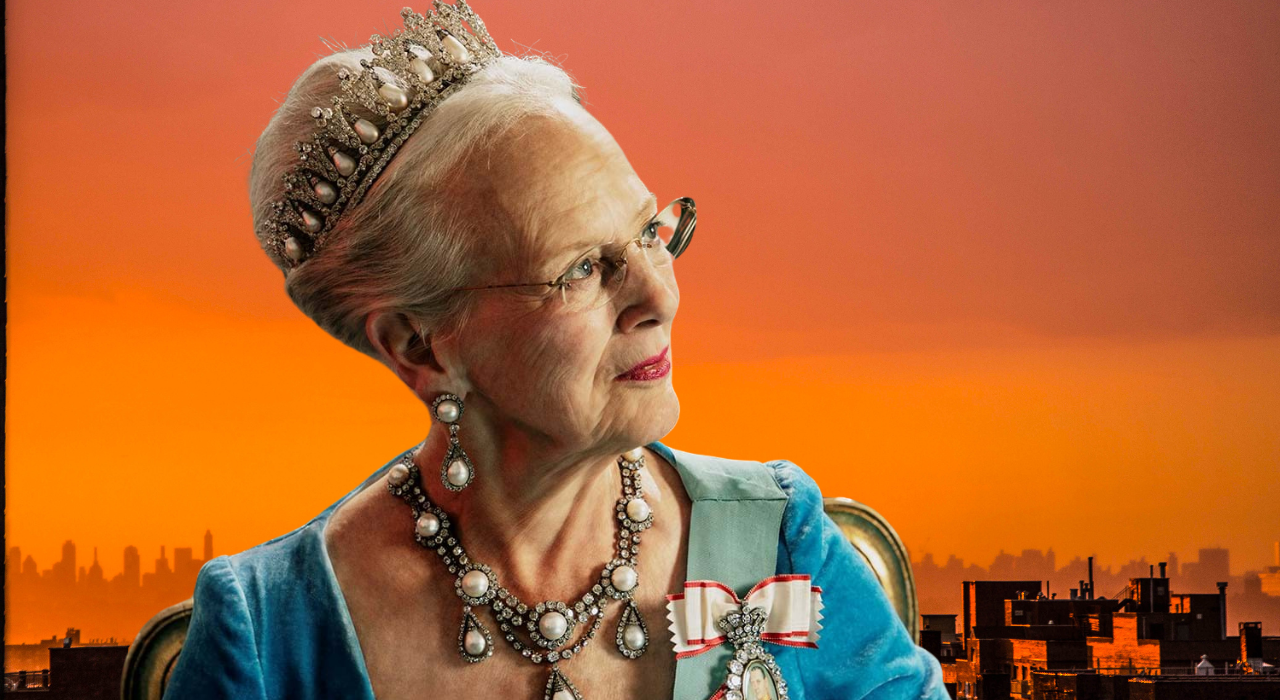Queen Margrethe II of Denmark made a significant announcement in her New Year’s speech, revealing her decision to step down from the throne in favor of her son, Crown Prince Frederik. The abdication is set to take place on January 14th, coinciding with the 52nd anniversary of her own accession to the throne at the age of 31, succeeding her father, King Frederik IX.

Expressing gratitude, Danish Prime Minister Mette Frederiksen extended a heartfelt thank you to the 83-year-old monarch for her lifelong dedication and unwavering efforts in serving the Kingdom. In a statement, Frederiksen described Queen Margrethe as the embodiment of Denmark. Over the years, she has played a pivotal role in defining the essence of the Danish people and the nation through her words and actions.
The announcement marks a historic moment in Danish royalty, as Crown Prince Frederik prepares to assume the responsibilities of the throne. Queen Margrethe’s legacy and impact on the nation are acknowledged with deep appreciation as Denmark transitions to a new chapter under the leadership of the upcoming monarch.
Standing at an impressive 6 feet tall, Queen Margrethe II has not only held a ceremonial role as Denmark’s monarch but has also become one of the nation’s most beloved public figures. Despite the traditional nature of her position, she embraced a down-to-earth approach, often strolling through the streets of Copenhagen without much fanfare, endearing herself to the Danish people.
Known for her chain-smoking habit, Queen Margrethe’s warmth, linguistic prowess, and design talents endeared her to the public. Her popularity extended beyond her royal duties as she showcased her multifaceted personality. A passionate skier, she even served as a member of a Danish women’s air force unit during her time as a princess, participating in judo courses and endurance tests in snowy conditions.
Even as she aged, Queen Margrethe maintained her resilience and adventurous spirit. In 2011, at the age of 70, she visited Danish troops in southern Afghanistan, donning a military jumpsuit and demonstrating her unwavering commitment to her role as a symbol of strength and unity.
Her reign as monarch was marked by extensive travels throughout the country, with regular visits to Greenland and the Faeroe Islands, semi-independent territories within the Danish Realm. Everywhere she went, Queen Margrethe was met with enthusiastic cheers from crowds, underscoring her deep connection with the people she served.
Denmark boasts the oldest reigning monarchy in Europe, with a lineage dating back to the Viking king Gorm the Old, who passed away in 958. Queen Margrethe II, the current head of state, operates within the constraints set by the Danish Constitution, which strictly prohibits her involvement in party politics. Despite this, the queen displayed a profound understanding of the law and demonstrated knowledge of the legislation she was called upon to sign.
Her educational background reflects a diverse range of disciplines. Fluent in French and English from an early age, she also acquired proficiency in Swedish from her mother. Queen Margrethe pursued studies in archaeology, philosophy, political science, and economics at various prestigious institutions, including universities in Copenhagen, Aarhus, and Cambridge. Her academic journey also took her to the London School of Economics and the Sorbonne in Paris, showcasing a commitment to a well-rounded education. This intellectual foundation undoubtedly contributed to her capacity to navigate the complexities of her role as a constitutional monarch.
From the moment he entered the world on May 26, 1968, Frederik André Henrik Christian was destined to be the future heir to the Danish throne. Born to Queen Margrethe and her late French-born husband, Prince Henrik, who passed away in February 2018, Frederik, now 55, holds a significant place in the royal lineage. He shares his regal journey with a younger brother, Prince Joachim.
Remarkably, since the tender age of 18, Frederik has stepped into the role of regent whenever his mother was away from the kingdom, shouldering official responsibilities with grace. This included engaging with thousands of people through handshakes and hosting foreign dignitaries, showcasing his dedication to his role and the people of Denmark. As he prepares to ascend to the throne, Frederik’s journey reflects a lifetime of preparation and commitment to serving his nation.
“As we step into the new year, an exciting chapter awaits us as Crown Prince Frederik is set to ascend to the throne, with Crown Princess Mary taking on the esteemed title of queen. This heralds the arrival of a fresh era with a new regent and a dynamic royal couple at the helm. The prime minister’s statement assures us that they are fully prepared for the weight of responsibility and the challenges that lie ahead. Anticipation mounts as we embark on this journey with confidence in their readiness to fulfill their roles with dedication and grace.”
A Royal Journey: Queen Margrethe II’s 50 Years of Reign and Legacy

Reign: January 14, 1972 – January 14, 2024 Predecessor: Frederick IX Heir apparent: Frederik Prime Ministers: See list Born: April 16, 1940 (83 years old) Birthplace: Amalienborg, Copenhagen, Denmark Spouse: Henri de Laborde de Monpezat (married in 1967; passed away in 2018) Children:
- Frederik, Crown Prince of Denmark
- Prince Joachim Names: Margrethe Alexandrine Þórhildur Ingrid House: Glücksburg[1] Father: Frederick IX of Denmark Mother: Ingrid of Sweden Religion: Church of Denmark
With a reign spanning from January 14, 1972, to January 14, 2024, Queen Margrethe II has left an indelible mark on Denmark’s history. Born on April 16, 1940, in the heart of Copenhagen at Amalienborg, she is a member of the Glücksburg house. The passing of her spouse, Henri de Laborde de Monpezat, in 2018 marked a significant chapter in her life.
A dedicated mother, Queen Margrethe has two sons: Frederik, the Crown Prince of Denmark, and Prince Joachim. Her full name, Margrethe Alexandrine Þórhildur Ingrid, carries the weight of tradition and legacy.
Throughout her reign, Queen Margrethe navigated the responsibilities of the throne with a steadfast commitment to her people and country. Her religious affiliation with the Church of Denmark reflects the cultural and historical ties that have shaped her reign. As Denmark prepares for the next chapter, with Crown Prince Frederik as the heir apparent, Queen Margrethe’s legacy remains embedded in the annals of Danish history.
A Royal Scholar: Queen Margrethe II’s Educational Legacy
Margrethe’s educational journey is a testament to her diverse interests and pursuit of knowledge. She commenced her schooling at the esteemed N. Zahle’s School in Copenhagen, where she completed her studies in 1959. Her quest for a well-rounded education led her to North Foreland Lodge, a boarding school for girls in Hampshire, England, for a year.
The academic odyssey continued as she delved into prehistoric archaeology at Girton College, Cambridge, from 1960 to 1961. In the following years, Margrethe explored political science at Aarhus University between 1961 and 1962. She attended the London School of Economics in 1965 and the Sorbonne in 1963 as a result of her intellectual curiosity, demonstrating her dedication to a global viewpoint.
Her membership in the Society of Antiquaries of London, which emphasizes her interaction with scholarly circles outside of Denmark, is a noteworthy recognition of her contributions to the field of archaeology. Queen Margrethe’s path through school reflects her commitment to lifelong learning and a wide range of academic fields.
Queen Margrethe II’s Enduring Marriage and Family

Love blossomed for Princess Margrethe during her time in London, where she encountered Henri-Marie-Jean-André de Laborde de Monpezat, a French diplomat serving as the legation secretary at the Embassy of France. The announcement of their engagement on October 5, 1966, marked the beginning of a significant chapter in her life.
The couple exchanged vows on June 10, 1967, in a solemn ceremony at the Holmen Church in Copenhagen, with the festivities continuing at Fredensborg Palace during the wedding reception. Henri-Marie-Jean-André de Laborde de Monpezat assumed the distinguished style and title of “His Royal Highness Prince Henrik of Denmark” in recognition of his role as the spouse of the heir presumptive to the Danish throne.
Their union endured for more than fifty years, a testament to their enduring love and commitment, until Prince Henrik’s passing on February 13, 2018. In less than a year after their marriage, Princess Margrethe welcomed their firstborn, a son, on May 26, 1968. Embracing Danish royal traditions, she chose the name Frederik for her elder son, adhering to the alternation between Frederik and Christian in the lineage of Danish kings.
The following year brought the joyous arrival of their second child, named Joachim, born on June 7, 1969. This marked the expansion of their royal family, with each member playing a unique role in the rich tapestry of Danish history.
Queen Margrethe II’s Extended Family Legacy
The Queen’s family is a source of joy and continuity, with two children and a total of eight grandchildren, each welcomed into the world at Rigshospitalet in Copenhagen.
Crown Prince Frederik, born on May 26, 1968, is at the helm of the royal family. His union with Mary Donaldson on May 14, 2004, at Copenhagen Cathedral marked a momentous occasion. The couple has since been blessed with four children, bringing laughter and vitality to the royal household:
- Prince Christian, born on October 15, 2005
- Princess Isabella, gracing the family on April 21, 2007
- Prince Vincent and Princess Josephine, twins born on January 8, 2011
Prince Joachim, the Queen’s second son, was born on June 7, 1969. His journey in matrimony began with Alexandra Manley on November 18, 1995, at Frederiksborg Palace Church, Hillerød. After their divorce on April 8, 2005, Prince Joachim found love again with Marie Cavallier, whom he married on May 24, 2008, at Møgeltønder Church, Møgeltønder. Their family has expanded to include four children, enriching the royal tapestry:
- Count Nikolai, born on August 28, 1999
- Count Felix, joining the family on July 22, 2002
- Count Henrik, born on May 4, 2009
- Countess Athena, adding her presence on January 24, 2012
The Queen’s lineage is flourishing, with each grandchild contributing their unique essence to the vibrant narrative of the Danish royal family.
